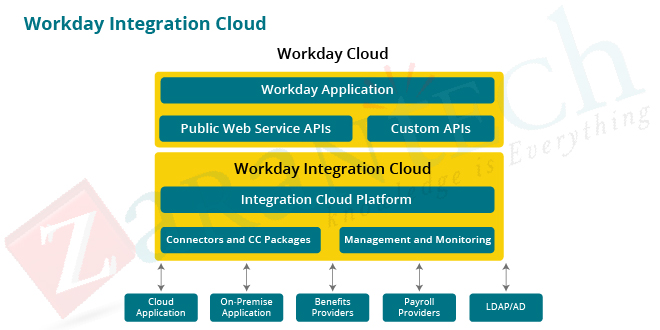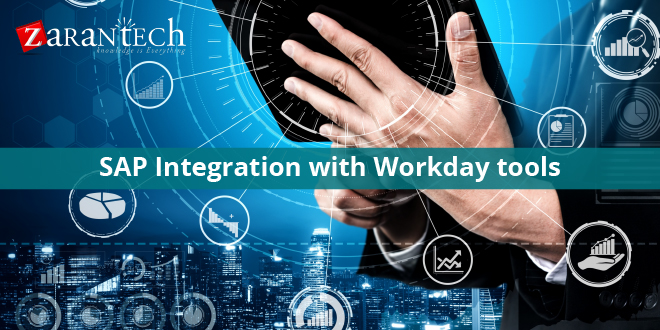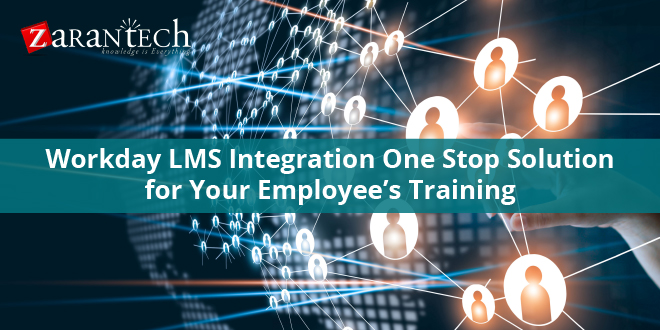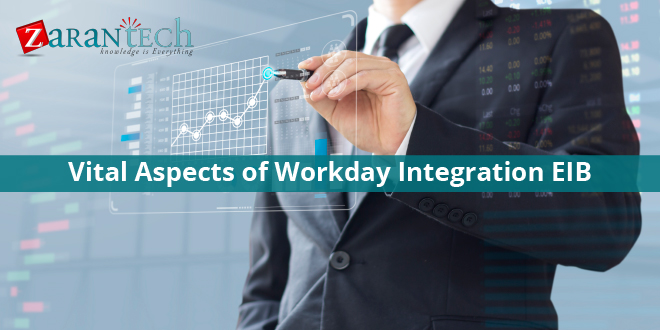Workday Integration Tutorials
Category: Workday Integration Posted:Aug 03, 2019 By: Serena Josh
Welcome to Workday Integration Tutorials. The objective of these tutorials is to provide an in-depth understanding of Workday Integration.
In addition to free Workday Integration Tutorials, we will cover common interview questions, issues and how to’s of Workday Integration.
Introduction
Workday is a leading provider of enterprise cloud applications for human resource and finance and it is quickly becoming the centerpiece of the enterprise HR ecosystem. It is a Software-as-a-Service (SaaS) application built for the HR and operations needs for today’s business.
Workday Integration Cloud
Workday’s Integration Cloud Platform is a complete Integration Platform-as-a-Service (iPaaS) for building, deploying, and managing integrations to and from Workday. It provides a proven, enterprise-class platform that consists of an Enterprise Service Bus (ESB) embedded as part of the Workday platform with associated tools directly within the Workday UI for managing and monitoring integrations. The Workday Integration Cloud also provides pre-built and delivered connections to non-Workday systems, as well as tools for developing custom integrations. All integrations are deployed to and run on Workday without the need for any on-premise middleware.
Workday Integration Challenges
Organizations have created connectivity between Workday and applications and services through integration tools as well as by implementing point-to-point integration. Integration tools help provide a quick and simple connection between two endpoints, but as the number of endpoints and the complexity of the integrations increase, a simple tool cannot deliver complete results.
Businesses have also made use of point-to-point integration in order to connect and synchronize data between Workday and various systems, services, data sources, and APIs. This approach establishes a direct connection between endpoints, resulting in tightly coupled integration. Because of this, change must be made directly by experienced developers, slowing down processes and leaving the connections vulnerable to breakage at even the slightest errors. Moreover, because of the complexity of the integrations and numerous endpoints that need to be connected, this method quickly becomes an intricate mess. With fragile connections vulnerable to breakage at the slightest changes, point-to-point integration lacks reliability and scalability.
In order to overcome the challenges of the New Enterprise, an integration platform capable of integrating both on-premises and SaaS applications is crucial.
These core tutorials will help you to learn the fundamentals of Workday Integration. For an in-depth understanding and practical experience, explore online.
The Workday Approach: Integration in the Cloud
Human capital, payroll, and financial management systems must interact in a variety of ways with other internal and external systems and data sources. Unlike legacy enterprise application providers, Workday understands the importance of integration to core systems-of-record because integration has been a fundamental architectural and application design criterion from the company’s inception.
Workday thinks that connectivity to other applications and resources should be simpler to build, deploy, manage, and evolve over time. This is a significant and long-awaited change from the way integration is currently done for most enterprise systems. By offering a variety of packaged solutions and integration tools as well as the ability to deploy integrations to the Workday Cloud, Workday helps relieve the burden of systems integration. To simplify systems integration, Workday provides the following solutions and tools:
- Open, Standards-Based Web Services APIs. At the foundation of our approach, Workday provides comprehensive standards-based web services APIs to support all integrations to and from Workday. Workday APIs are not only organized by functional areas but they also automatically inherit the security permissions of the user executing the calls.
- Integration Cloud Platform. The Workday Integration Cloud Platform is a proven, enterprise-class Integration-Platform-as-a-Service (iPaaS) that enables Workday, customers, and partners to build, deploy, and manage integrations to and from Workday in the Workday Cloud.
- Integration Cloud Connect. Workday offers a growing ecosystem of packaged integrations and connectors. These offerings are 100 percent built, supported, and maintained by Workday as well as run and managed in the Workday Cloud. This vendor-supported approach significantly shifts the cost, risk, and burden of integrations from the customer to Workday and significantly accelerates implementation times.

You may also like to read- How Workday simplifies integration
Why Use Workday for Integration?
Clearly, you can build any integration you need to the Workday API using your own middleware technology; MuleSoft, Boomi, TIBCO, or Oracle Fusion Middleware are just a few of the middleware tools used by Workday customers. However, there are several major advantages to using the Workday Integration Cloud:
-Integrations surface naturally inside the Workday user interface. You can view the integrations, launch them, schedule them, secure them, include them in Workday business processes, configure notifications around them, and audit and log them— all from within the Workday user experience.
-Both packaged and custom integrations run on Workday software and hardware infrastructure in our data centers. You do not need to license or use any on-premise integration middleware platform, which can greatly simplify the deployment and management of integrations especially when the majority of the integrations are connecting to Workday
-Finally, Workday’s integration tools are also highly optimized for efficiently building integrations to and from Workday. Purpose-built packaged components handle much of the plumbing aspects of integration-building, freeing you to focus on the critical business logic.
Go through our Workday Integration Interview Questions to crack the Interviews.
Overall, Workday’s packaged integrations and tools are widely proven in a variety of demanding situations and offer a lower-cost, lower-risk path to delivering needed integrations in support of your deployment.
Workday Embraces Open, Standards-Based Web Services APIs
At the core of Workday is open standards-based APIs that give complete programmatic access to business operations and processes. These web services-based APIs provide an integration format (SOAP or REST) that is interoperable with all the leading client-side languages and integration middleware platforms. In addition, the Workday APIs are fully versioned, which means customers that build an integration against any particular release of Workday are guaranteed those integrations will continue to work across future Workday updates. The Workday APIs contains the following service categories:
Business Services are the primary way to programmatically interact with Workday and directly correspond with the major functional areas of Workday (e.g., Staffing, Benefits, or Financial Management). The operations within these services correspond with business events and business objects within Workday (such as “Hire Employee” within Staffing or “Get Journal” within Financial Management). Operations return extensive data sets but can also be configured via “Response Groups” to return a subset of possible data (e.g., contact information, position information, etc.).
Reporting Services, also known as Reports-as-a Service (RaaS), provide a flexible, user-defined means to get data out of Workday. All of the reports created using Workday’s built-in report writer can be set up to deliver data via RSS, REST (JSON), or traditional SOAP-based messages with the simple click of a checkbox. This includes customer-defined calculated fields. Reporting Services effectively provide a mechanism within Workday for customers to define and create their own custom APIs. If only a subset of fields within Workday Human Capital Management services is needed for a specific integration, then a custom API 4 that contains only those needed fields can be built. Workday or any third-party integration tool can then consume this API.
Outbound Messaging Services are used to provide real-time notifications to external applications when business events occur within Workday. For example, the workflow behind the “Hire” event in Workday could be configured to publish an outbound message to a subscribing third-party system. Upon receipt of the real-time notification, the subscribing system could then query Workday (using the public API) to get details about the “Hire” (e.g., employee information, job-related information, etc.) and then take appropriate action.
Monitoring Services expose Workday integration infrastructure status to external applications so integrations can be enriched with additional functionality. For example, external applications can monitor the execution of integration events that are happening within Workday. With this level of information, external applications can see not only the status of their current integrations but also gain insight into when and how data will come from Workday prior to the events occurring. This type of transparency gives business users greater visibility into inter-system processing than ever before.
Conclusion
For more such informative and engaging articles on Workday Integration, feel free to visit our website. Also, at ZaranTech we offer self-paced online training of Workday Integration and various other Workday, SAP topics. To learn more about our courses, please visit our website.
Before you enroll in ZaranTech’s certification course on Workday Integration do check out this demo video:
Happy learning!





 99999999 (Toll Free)
99999999 (Toll Free)  +91 9999999
+91 9999999